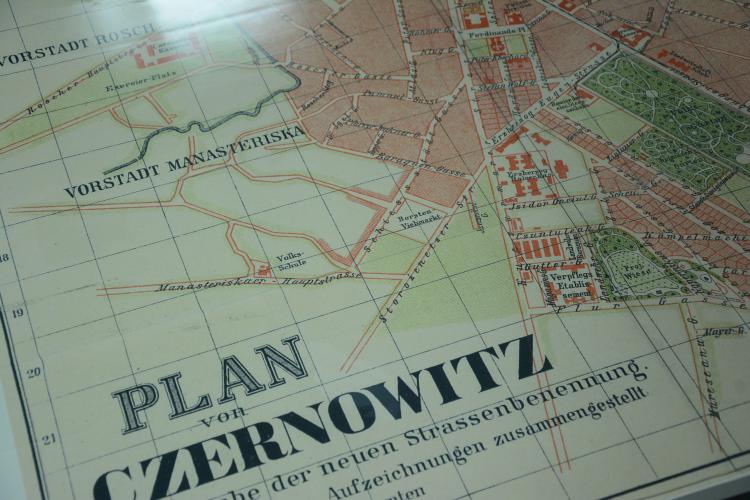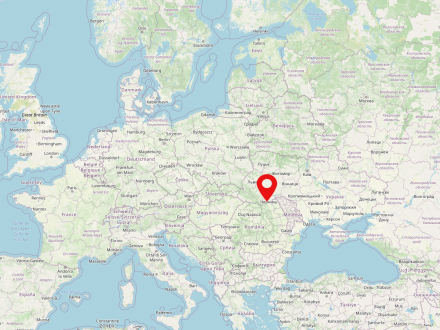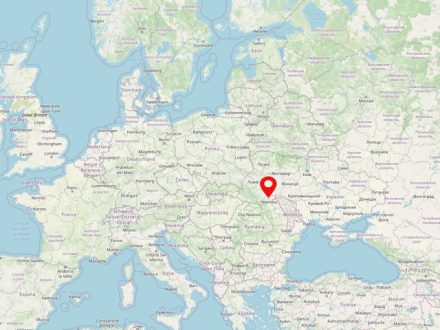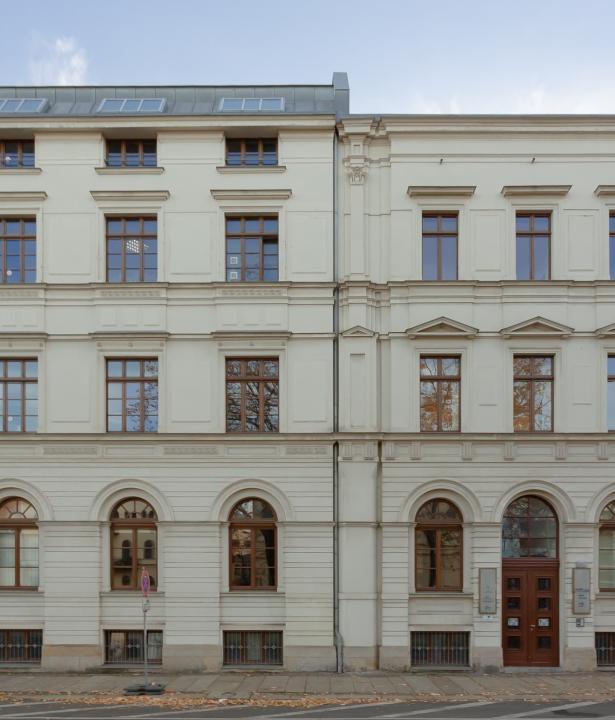Buko...? - what was it again? Bukovina is not a familiar name to you? Don't worry, because the permanent exhibition of the Bukovina Institute at the university will introduce you to this diverse and fascinating yet little-known region. Learn more about the history of this historic cultural landscape from the time of the Habsburg Empire, through the difficult times marked by (forced) migrations during the two 20th century world wars, to the situation today.
Text
Let yourself be transported to another time and search for traces through the religious, linguistic and ethnic diversity of the historical region of . Through historical maps, old photographs, but also everyday objects you will discover life stories, many exciting impressions and new perspectives on the history and post-history of Bukovina in our (small) exhibition.
Listen to the stories of contemporary witnesses at our listening stations, wander through the varied exhibits, or take an imaginary walk through Habsburg (ukr. Černivci) by following the streets on historical city maps.
Based around the history of Bukovina, the exhibition primarily highlights the topics of (forced) migration and living together in a diverse society, as well as of being uprooted and losing one's homeland – and thus has the potential to connect to numerous experiences in our society today.
Bukovina
deu. Bukowina, ukr. Буковина, ukr. Bukowyna, ron. Bucovina, deu. Buchenland
Bukovina is a historical landscape in modern Romania and Ukraine. The northern part is situated in the Ukrainian Chernivtsi Oblast, while the southern part is part of the Romanian Suceava County. The region once formed a part of the Principality of Moldavia and the Habsburg Monarchy.
Listen to the stories of contemporary witnesses at our listening stations, wander through the varied exhibits, or take an imaginary walk through Habsburg
Černivci
ron. Cernăuţi, deu. Czernowitz, heb. צֶ׳רנוֹבִיץ, heb. Tschernowitz, yid. טשערנאָװיץ, yid. Tschernowitz, rus. Черновцы, rus. Tschernowzy, ukr. Чернівці, deu. Tschernowitz
Chernivtsi (Ukra. Чернівці) is a large city in southwestern Ukraine. The city is located on the border with Romania and is widely considered to be the capital of the historic Bukovina region. Chernivtsi was an significant place of Jewish culture. In 2017 Chernivtsi had about 62,000 inhabitants.
Due to the war in Ukraine, it is possible that this information is no longer up to date.
Based around the history of Bukovina, the exhibition primarily highlights the topics of (forced) migration and living together in a diverse society, as well as of being uprooted and losing one's homeland – and thus has the potential to connect to numerous experiences in our society today.

Bukowina-Institut, Free access - no reuse
Bukowina-Institut, Free access - no reuse

Bukowina-Institut, Free access - no reuse
Bukowina-Institut, Free access - no reuse
Externe Links
External Image

External Image

External Image

External Image









